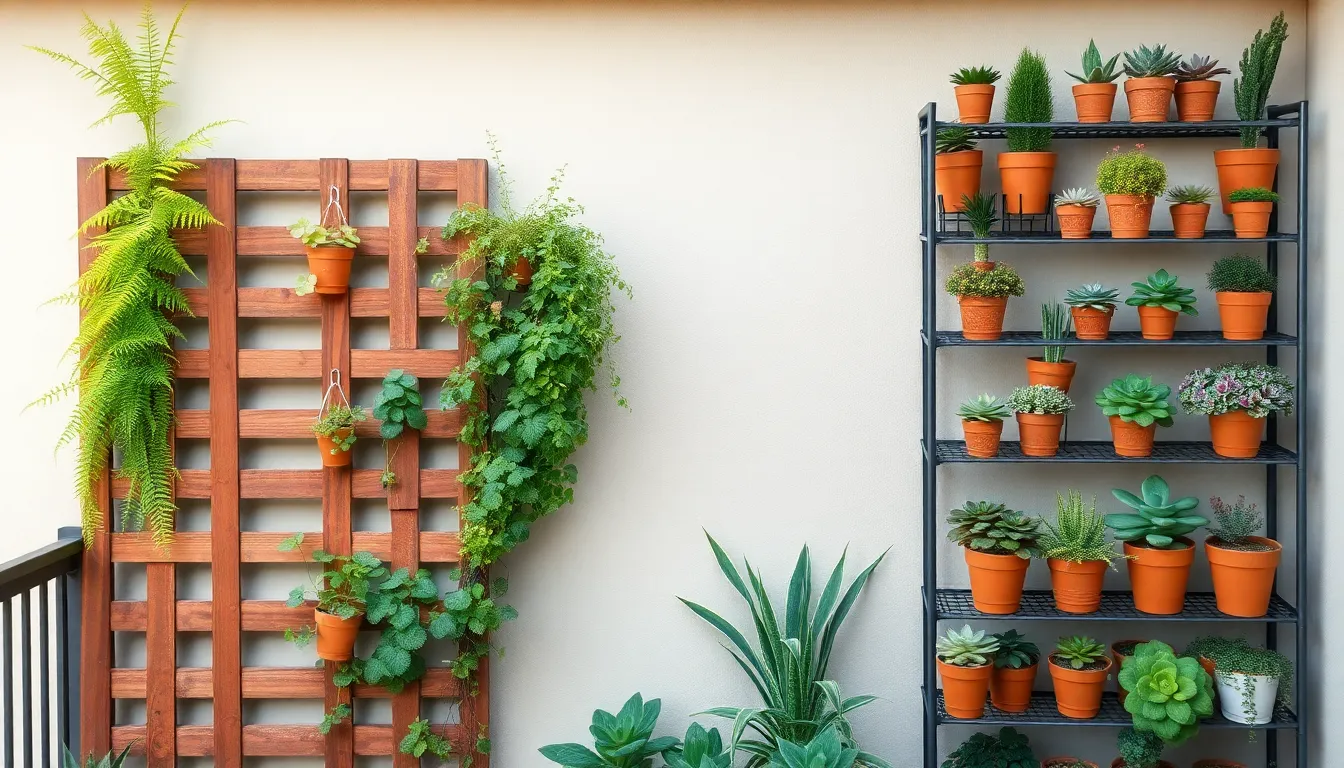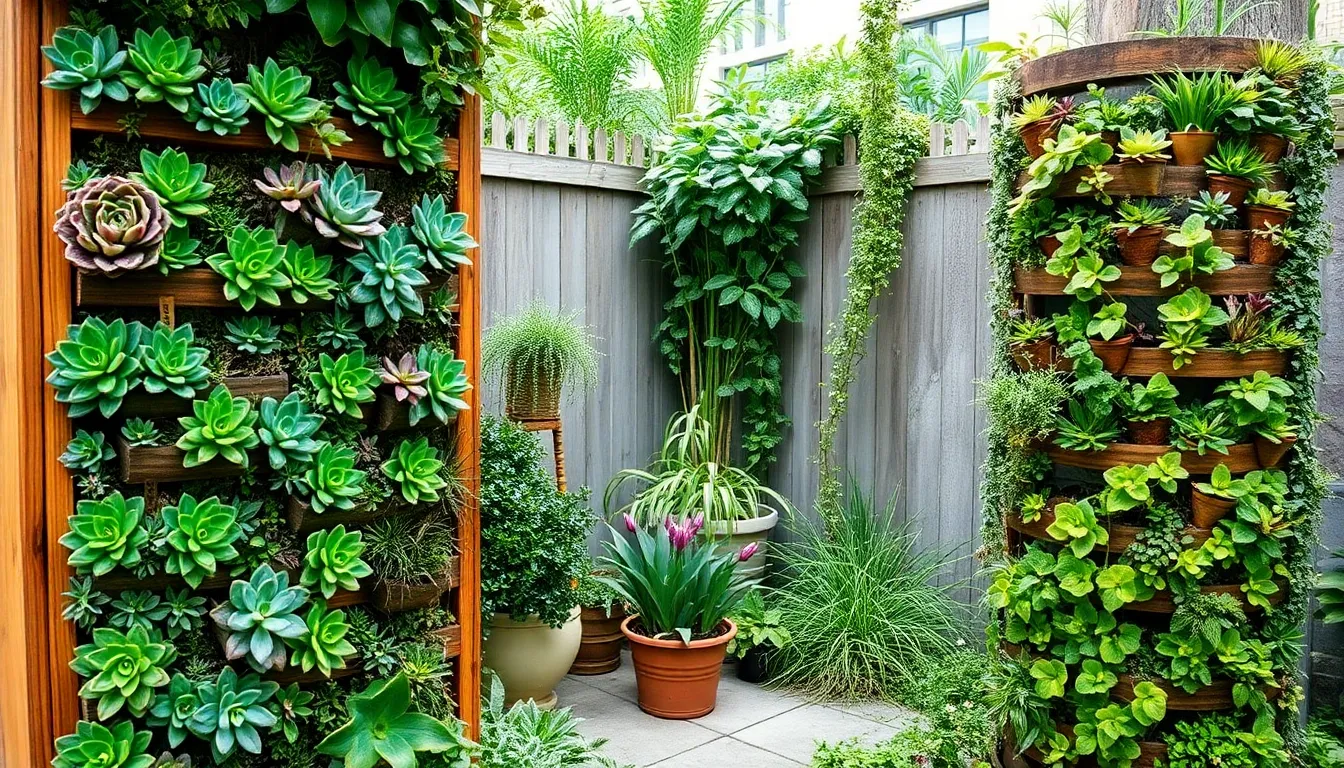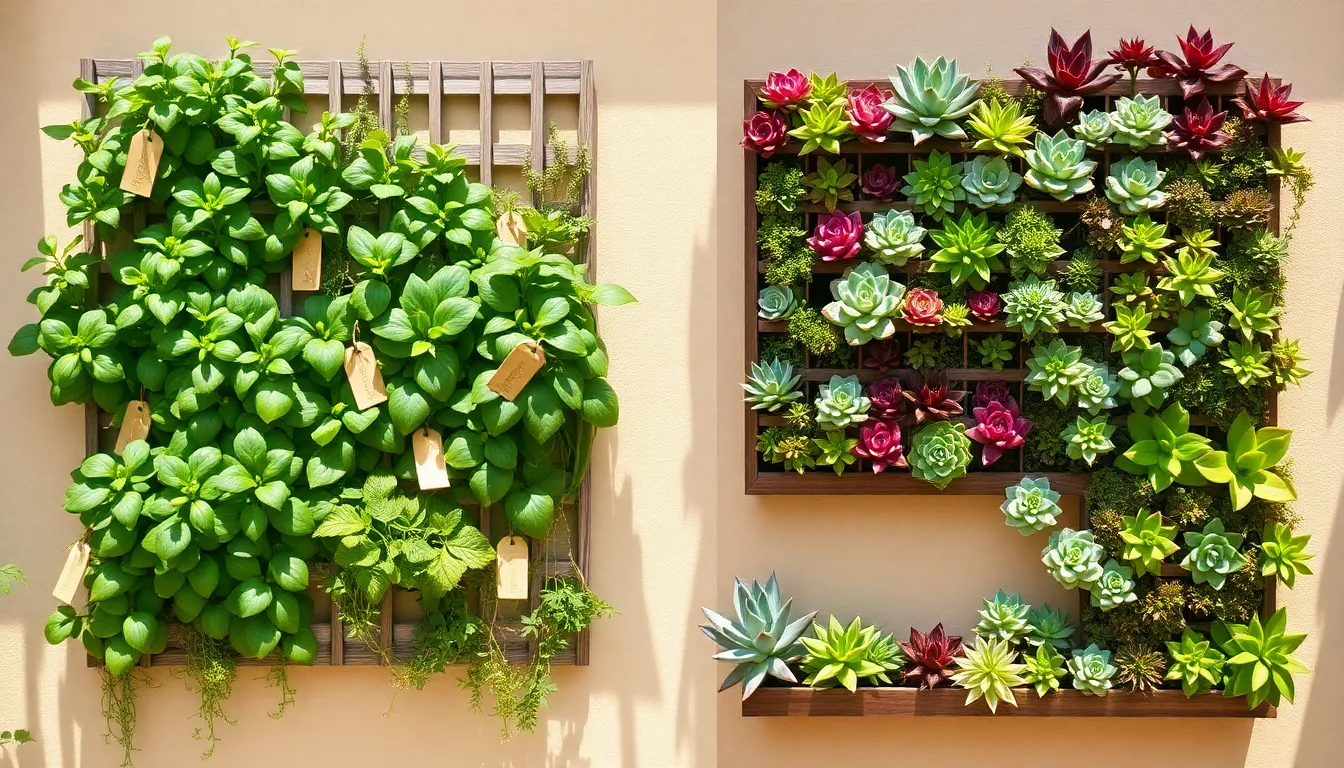Gardening is a joyful pursuit that connects us to the rhythm of nature, yet space constraints often challenge our green dreams. Vertical gardening offers a creative solution, allowing both beginners and seasoned gardeners to transform even the smallest spaces into lush, thriving sanctuaries. This innovative approach not only maximizes space but also opens up a world of design possibilities that can turn any wall, fence, or balcony into a vibrant canvas of greenery.
In this article, you’ll discover ten inspiring vertical garden ideas tailored to fit even the tiniest of spaces. From simple DIY projects to more intricate designs, each idea is crafted to spark your creativity and help you cultivate your personal oasis. Whether you’re looking to grow your own fresh herbs, add a splash of color with blooming flowers, or simply bring more nature into your daily life, there’s something here for everyone. As you explore these inspirations, you’ll find practical tips and step-by-step guidance to effortlessly bring these concepts to life in your own home.
Maximizing Vertical Space Effectively
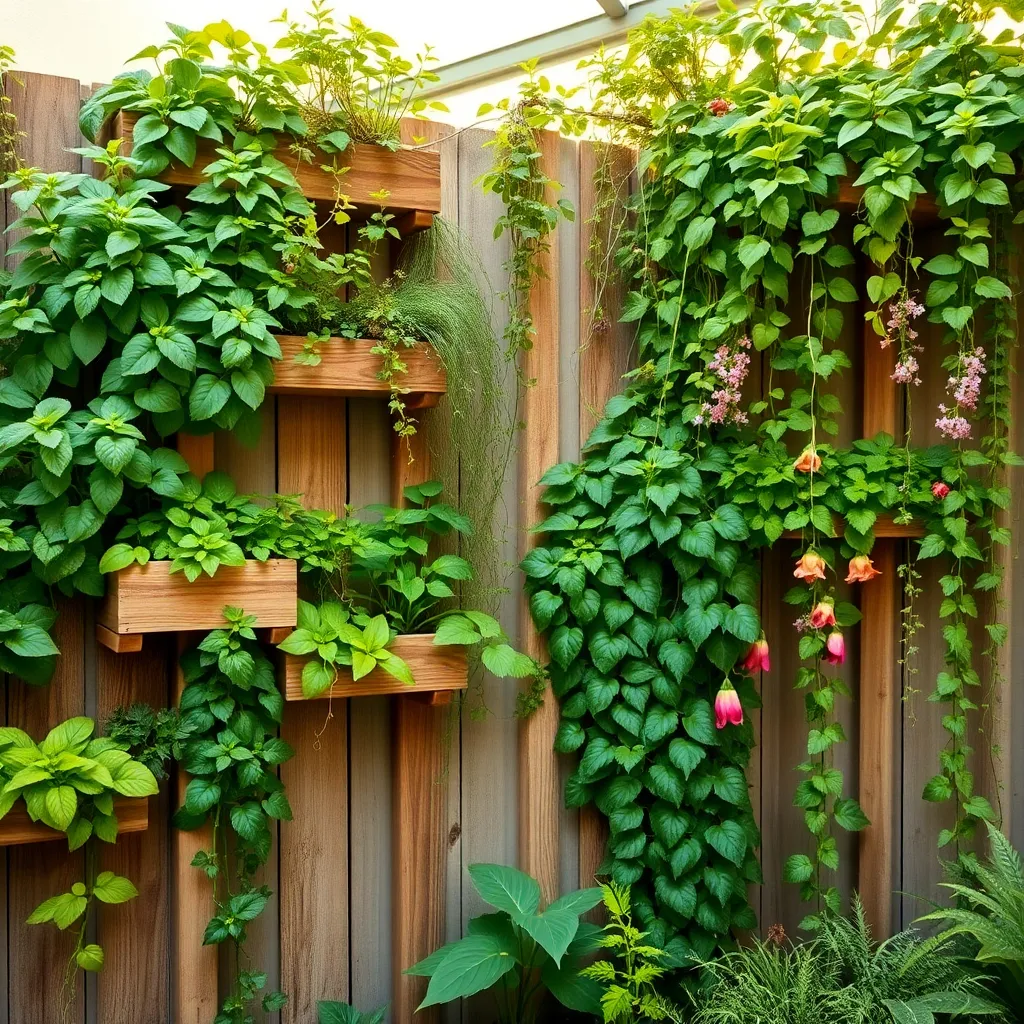
Vertical gardens are a brilliant solution for small spaces, allowing you to grow a variety of plants without a large footprint. Start by choosing a sturdy structure such as a trellis, wall-mounted planter, or even repurposed pallets to support your plants.
Proper plant selection is crucial when maximizing vertical space effectively. Opt for climbing plants like peas, beans, or cucumbers, which naturally grow upwards and can be trained to follow your vertical structures.
For those new to vertical gardening, consider starting with herbs like basil, mint, or thyme, which thrive in wall-mounted pockets or hanging pots. Ensure these herbs receive at least six hours of sunlight per day and keep the soil consistently moist but not waterlogged.
Experienced gardeners can experiment with tiered vertical gardens, which allow for diverse microenvironments. By positioning taller plants like tomatoes at the top and shorter ones such as lettuces lower down, you create a dynamic system where each plant receives adequate light and airflow.
Regardless of your level of expertise, always use a high-quality, lightweight potting mix for your vertical garden to ensure proper drainage and nutrient availability. Regularly check and adjust watering, as vertical gardens can dry out more quickly than traditional beds, especially in warm weather.
Choosing the Right Plants
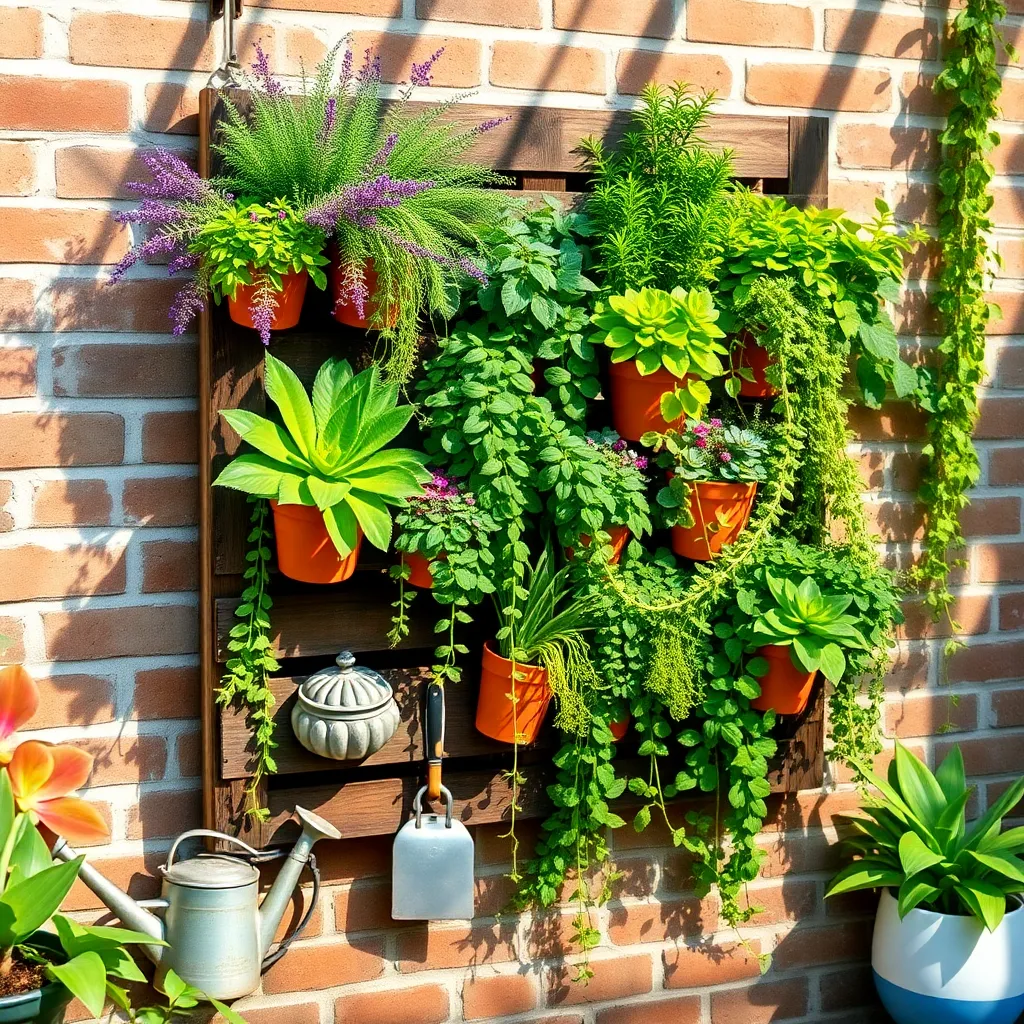
When selecting plants for a vertical garden, consider those with a compact and climbing habit. Vining plants like peas and beans are perfect as they naturally reach upwards, optimizing vertical space.
It’s essential to match plants with their preferred environmental conditions. For instance, herbs like thyme and oregano thrive in well-draining soil and full sun, making them ideal for sunny, vertical wall planters.
For those new to gardening, starting with hardy succulents can be a wise choice. These plants require minimal watering, making them low-maintenance and perfect for busy gardeners or those in arid climates.
Experienced gardeners might experiment with vertical strawberry planters for a fruitful harvest. Ensure strawberries are planted in nutrient-rich soil and receive at least six hours of sunlight daily for the best yield.
DIY Trellis and Framework Ideas
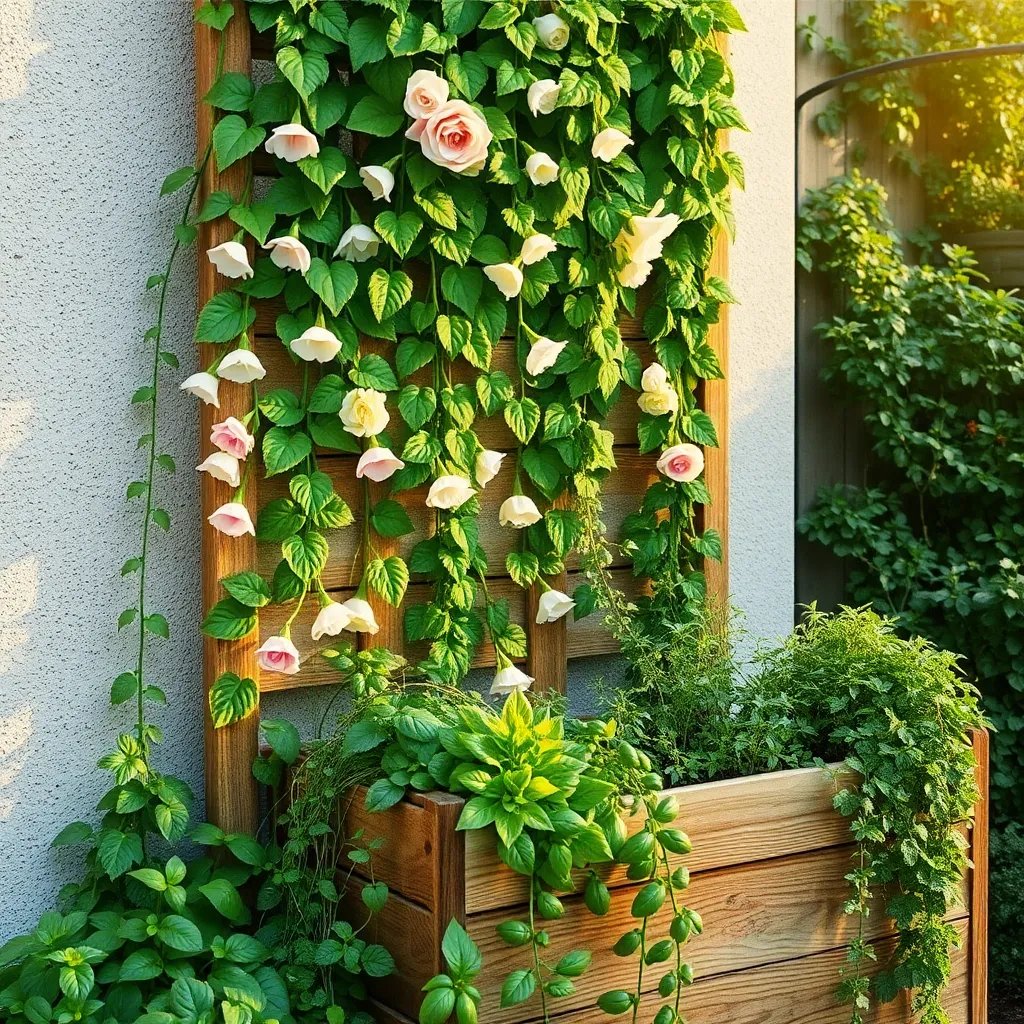
A DIY trellis can transform your small space into a lush vertical garden with minimal investment. Begin by selecting materials like bamboo, wire, or repurposed wood, ensuring they are sturdy enough to support your chosen plants.
For beginners, attaching a simple wire trellis to a sunny wall can be an excellent starting point. Secure the wire with hooks or nails, spacing them evenly, and train your plants by gently weaving stems through the wire as they grow.
Advanced gardeners might consider building an A-frame trellis, which allows for increased air circulation and light penetration. Use wooden slats or poles, ensuring they are treated for outdoor use to prevent rot and decay.
To optimize plant growth, choose climbers like peas, pole beans, or morning glories that naturally thrive when given vertical support. Ensure your plants receive adequate water and nutrients; a soil high in organic matter can boost growth and yield.
Wall-Mounted Planter Innovations
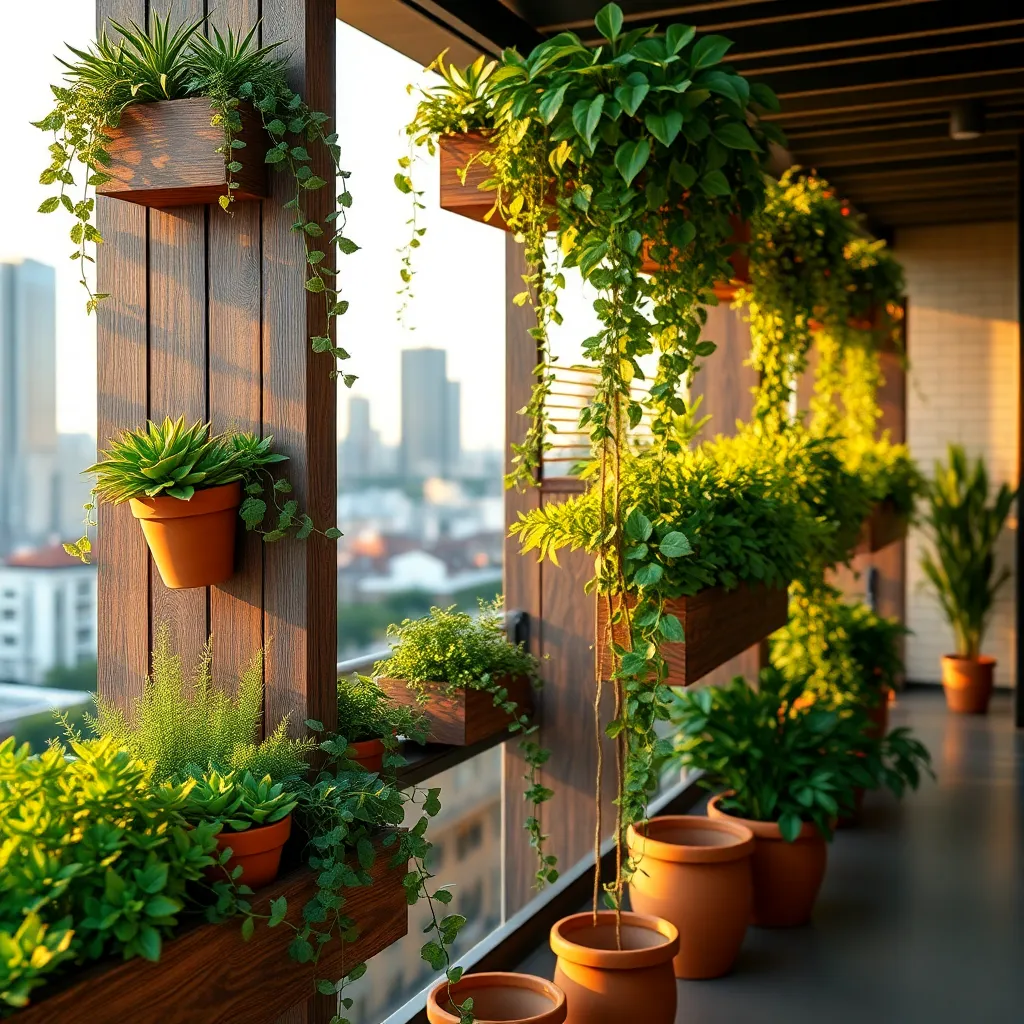
Wall-mounted planters are a brilliant solution for gardeners with limited space. These planters allow you to make the most of vertical areas, transforming bare walls into lush, green canvases. For beginners, starting with wall-mounted planters can be as simple as selecting a few hardy plant species like succulents or herbs. These plants require minimal care and can thrive with occasional watering and indirect sunlight.
Choosing the right type of soil is crucial for the success of your wall-mounted garden. A lightweight, well-draining soil mix helps prevent root rot and supports healthy plant growth. Consider using coco coir or a peat-based mix as these materials retain moisture without becoming waterlogged. For advanced gardeners, incorporating a slow-release fertilizer into the soil mix can provide nutrients over a longer period, promoting robust plant health.
When installing wall-mounted planters, ensure they are securely fastened to support the weight of soil and plants. Regularly check the moisture levels, as wall-mounted planters can dry out faster than traditional ground pots. To maintain consistent moisture, consider installing a simple drip irrigation system. This approach reduces the frequency of manual watering and ensures your plants receive the right amount of hydration.
To maximize sunlight exposure, position your wall-mounted planters on a south or west-facing wall. This placement ensures your plants receive adequate light throughout the day, which is essential for photosynthesis and growth. If natural light is limited, consider installing full-spectrum grow lights to supplement the available light. These lights can mimic sunlight, ensuring your plants continue to thrive even in less-than-ideal lighting conditions.
Hanging Garden Options Explored
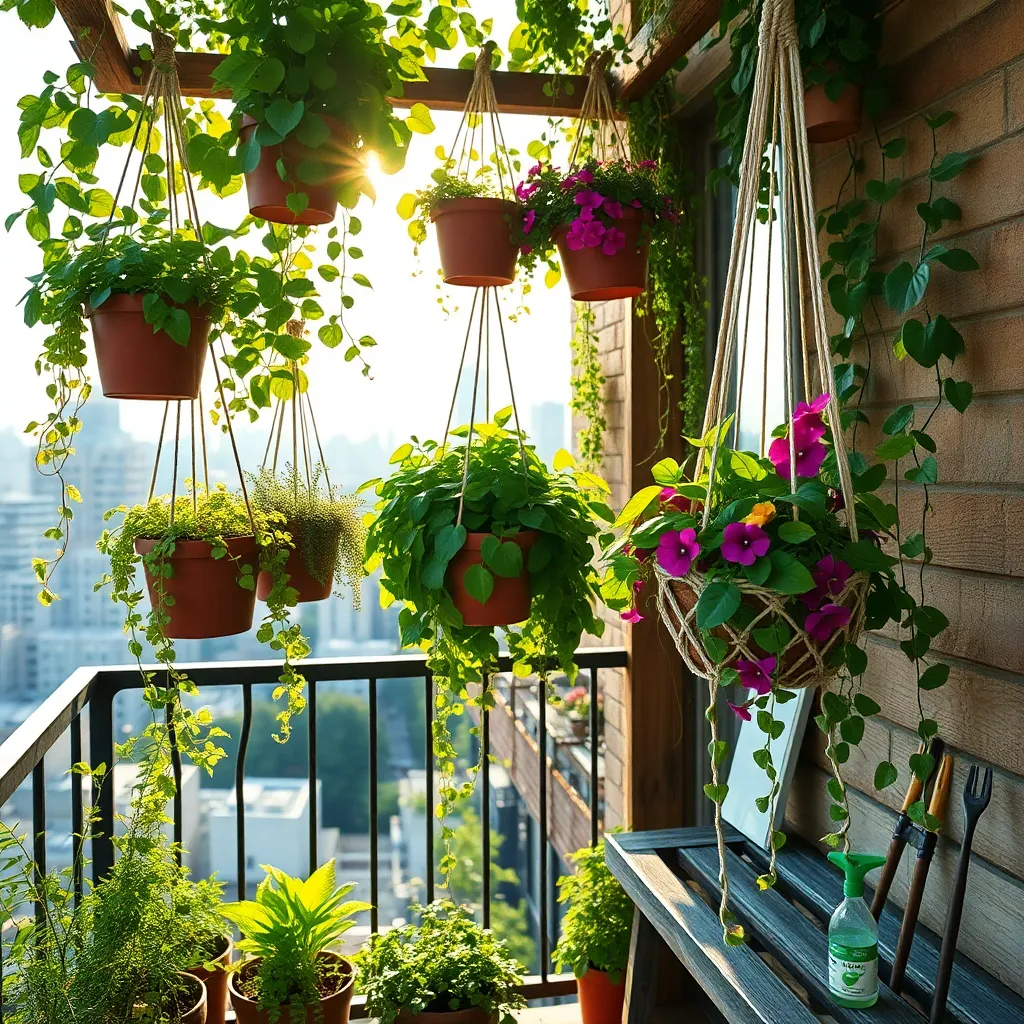
Hanging gardens offer a versatile and space-saving solution for small spaces, bringing greenery to areas that might otherwise remain unused. Choose lightweight containers to prevent excessive strain on your supporting structures, ensuring they can handle the weight when plants are fully watered.
Start by selecting plants that thrive in vertical environments, like ferns, ivies, or trailing succulents. These plants not only cascade beautifully but also flourish in hanging setups, making them perfect for beginners looking to add instant charm to their spaces.
Ensure your hanging plants receive adequate sunlight by positioning them near windows or using artificial grow lights if necessary. Most hanging plants benefit from bright, indirect light, which encourages healthy growth without scorching the foliage.
Watering can be tricky for hanging gardens, so aim to check soil moisture levels frequently. Invest in a moisture meter or simply use your finger to test; water thoroughly, allowing excess to drain, and wait until the top inch of soil is dry before watering again.
Pallet Gardens for Tight Spaces
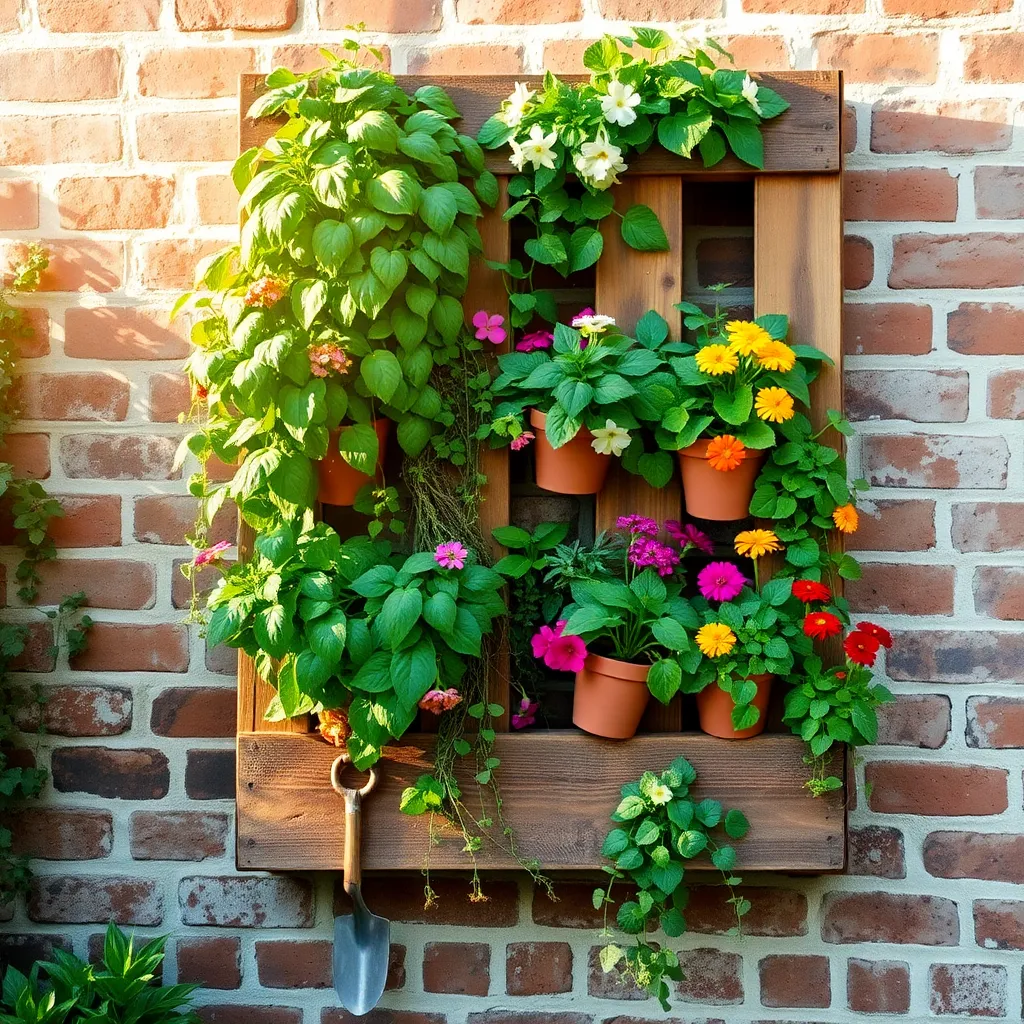
Pallet gardens are an excellent solution for those with limited space, offering a creative way to grow a variety of plants vertically. Begin by finding a sturdy, untreated wooden pallet, which you can often source from local warehouses or garden centers.
Before planting, line the back and sides of the pallet with landscape fabric to hold soil in place and prevent erosion. Fill the pallet with a lightweight, well-draining potting mix, rich in organic matter to support healthy plant growth.
Choose plants that thrive in compact spaces; herbs like basil, thyme, and oregano are perfect choices. For a splash of color, opt for vibrant flowers such as marigolds or petunias, which are resilient and easy to maintain.
Place your pallet garden in an area that receives at least 6 hours of sunlight daily, and water thoroughly whenever the top inch of soil feels dry. To ensure your plants remain healthy, apply a balanced liquid fertilizer every four to six weeks during the growing season.
For those looking to experiment, consider incorporating a drip irrigation system to simplify watering, especially if you’re away often. This advanced setup will help maintain consistent moisture, crucial for thriving plants in a vertical garden setup.
Repurposed Materials for Vertical Growth
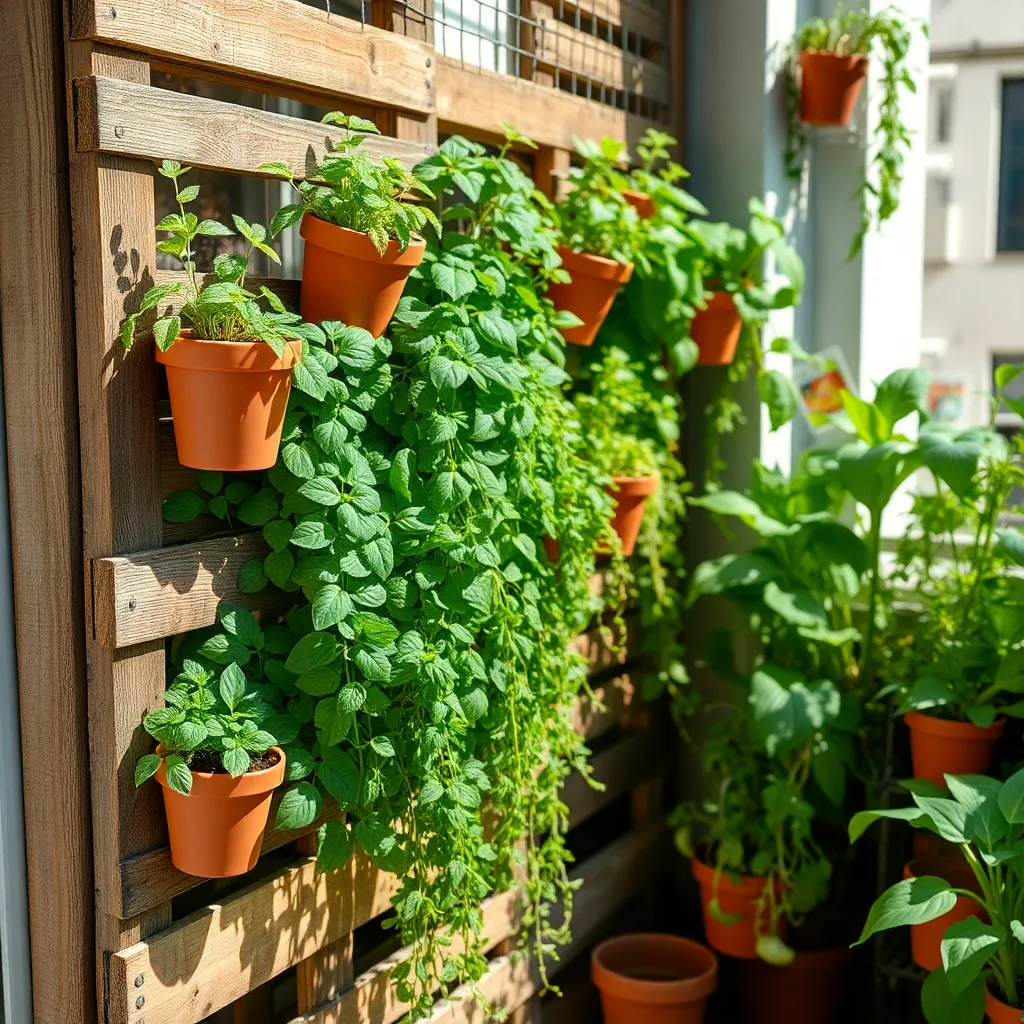
Repurposing materials for vertical growth is an excellent way to maximize space and reduce waste. You can transform items like old ladders, shoe organizers, or wooden crates into thriving vertical gardens.
Start by selecting sturdy materials that can withstand the weight of soil and plants. An old ladder, for example, can be leaned against a wall, with each rung serving as a shelf for potted plants.
Ensure proper drainage when using unconventional containers by drilling holes if necessary. Good drainage prevents waterlogged soil, which can lead to root rot and poor plant health.
For beginners, consider growing easy-care plants such as herbs or succulents, which require minimal maintenance. Position these structures to receive adequate sunlight; most herbs need at least 6 hours of direct sunlight daily.
Advanced gardeners might opt for using repurposed materials to create a hydroponic system. Utilizing PVC pipes or guttering can allow for nutrient-rich water flow, supporting a wide range of vegetables and herbs.
Maintaining Healthy Vertical Gardens
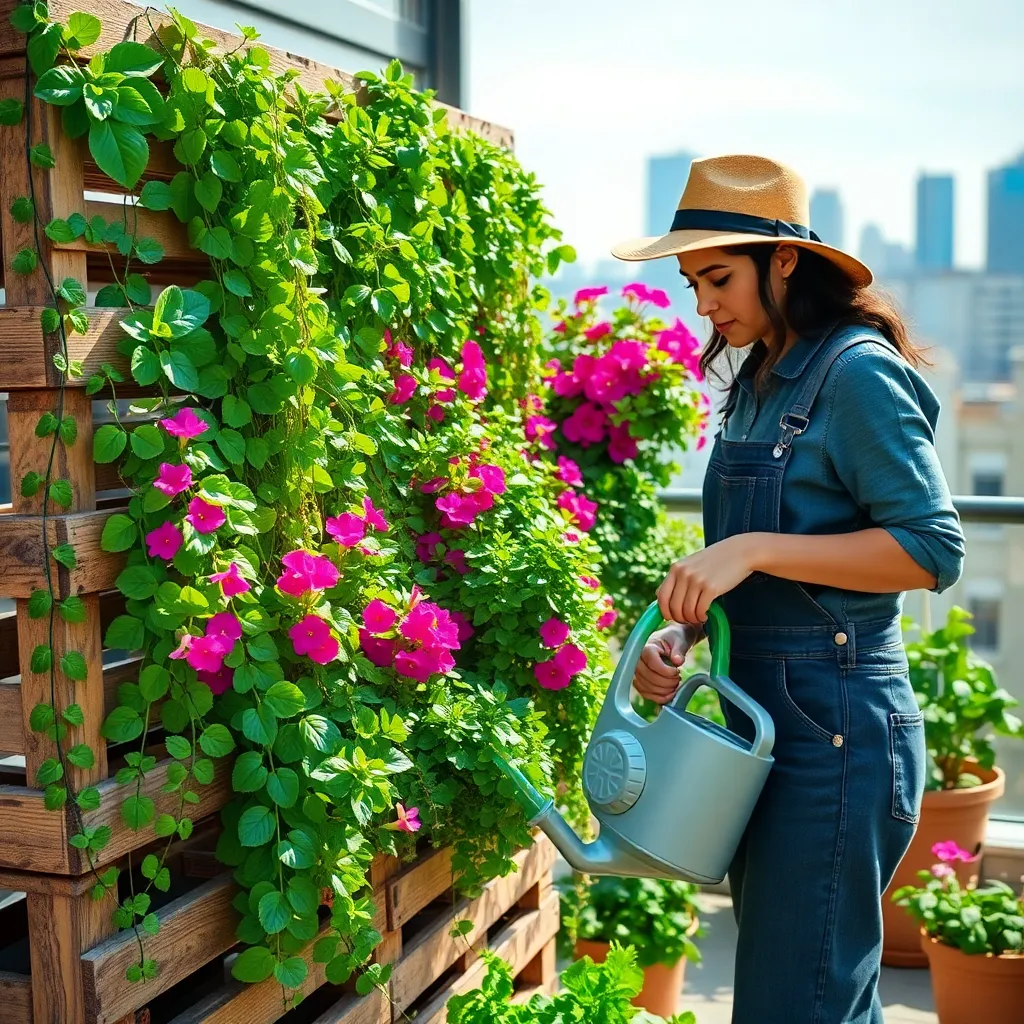
To maintain healthy vertical gardens, it’s crucial to select the right plants for your space and climate. Choose varieties that naturally thrive in vertical environments, such as ferns, succulents, or vining plants like sweet peas and nasturtiums.
Regular watering is essential, but it must be adjusted to the needs of your specific plants and the type of vertical system you have. Drip irrigation systems are highly effective for vertical gardens, ensuring consistent moisture without overwatering.
Soil quality is a foundational aspect of plant health, so use a high-quality potting mix that retains moisture yet drains well. Incorporating a slow-release fertilizer into the soil can provide essential nutrients over time, promoting strong and healthy growth.
Pruning is not only for aesthetics but also for plant health; regularly trim back dead or overcrowded growth to encourage air circulation and prevent disease. Additionally, monitor your plants for pests, as vertical gardens can be more susceptible to infestations due to their density.
Irrigation Solutions for Vertical Setups
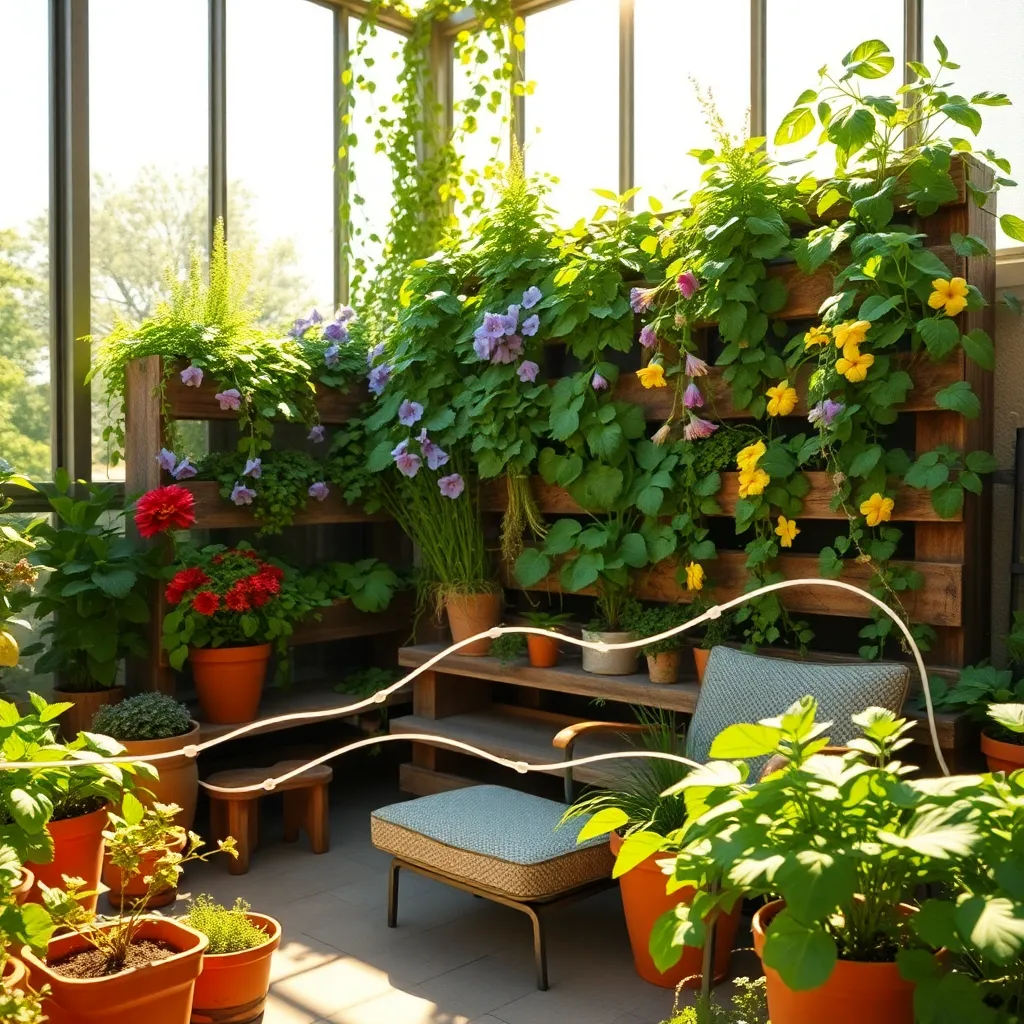
In vertical garden setups, efficient irrigation is crucial to ensure all plants receive adequate moisture. Drip irrigation systems are a popular choice for vertical gardens because they deliver water directly to the plant roots, minimizing wastage.
Consider using a timer with your drip system to automate watering schedules, especially if you’re busy or often forgetful. Watering early in the morning is ideal, as it allows moisture to reach roots before the sun’s heat causes evaporation.
For those new to vertical gardening, start with a simple gravity-fed system, which uses a water reservoir placed above the plants to naturally distribute water. Ensure the water pressure is sufficient to reach all levels of your garden, particularly if you have a tall setup.
Advanced gardeners might explore integrating moisture sensors with their irrigation systems to optimize water usage further. These sensors can detect soil moisture levels and only activate the irrigation system when necessary, preventing overwatering and conserving water resources.
Creative Vertical Garden Designs
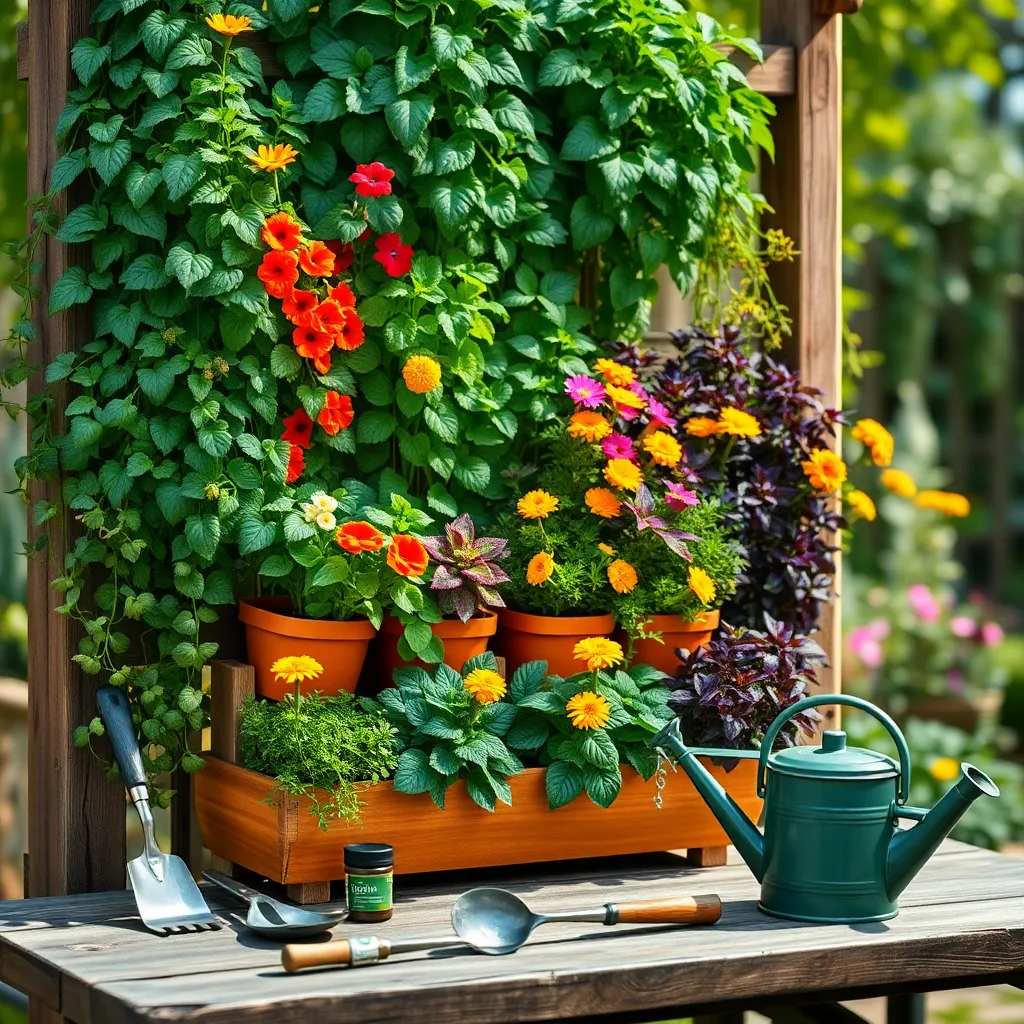
Vertical gardens offer a creative solution for maximizing space, especially in urban settings. To start, consider using a sturdy trellis or a pallet to provide a framework for your plants. Lightweight containers attached to these structures can support a variety of herbs, flowers, or even small vegetables. For beginners, plants like succulents or ferns are low-maintenance choices that thrive in vertical arrangements.
Ensure that your vertical garden receives adequate sunlight, which is crucial for plant health. Most vertical setups benefit from at least six hours of direct sunlight, making them ideal for south-facing walls. Consider the microclimates within your space; shade-loving plants like pothos or philodendrons can thrive in lower light areas. Regularly rotate plants to ensure even growth and prevent any one side from becoming leggy or underdeveloped.
Watering a vertical garden requires a bit of planning, as gravity can cause water to drain quickly. Installing a drip irrigation system can help ensure that each plant receives consistent moisture. Soil choice is critical; use a lightweight, well-draining mix to prevent root rot and promote healthy growth. Advanced gardeners can experiment with hydroponic systems, which use nutrient-rich water instead of soil, offering a modern twist on vertical gardening.
To add variety and interest, mix textures and colors by combining different plant species in your design. Consider using trailing plants like ivy or creeping jenny to soften the edges of your setup and create a lush, cascading effect. Regular maintenance such as pruning and deadheading will keep your vertical garden looking fresh and vibrant. Remember, a thriving vertical garden not only maximizes your space but also enhances the aesthetic appeal of your home or garden.
Conclusion: Growing Success with These Plants
In this exploration of ’10 Small-Space Vertical Garden Inspirations,’ we’ve uncovered the transformative power of nurturing relationships through creative gardening. From maximizing intimacy in tight spaces to fostering patience and growth, each concept highlights the unique parallels between thriving gardens and thriving relationships. We’ve delved into the importance of cultivating trust, the beauty of diversity, the essence of communication in shared spaces, and the value of resilience and adaptability.
Now, it’s time to turn inspiration into action. Choose one vertical gardening idea that resonates with you and your partner, and embark on this green adventure together. Whether it’s a simple herb garden or a more elaborate floral display, let this shared project be a testament to your commitment and cooperation.
Remember, like a well-tended garden, relationships flourish with care and attention. Bookmark this article to revisit these inspirations and remind yourself of the small yet impactful steps you can take in nurturing your bond. As you cultivate your garden and your relationship, look forward to a future where your connection, much like your plants, grows stronger and more vibrant with each passing day. Your journey to relationship success begins here; embrace it with warmth and enthusiasm.

